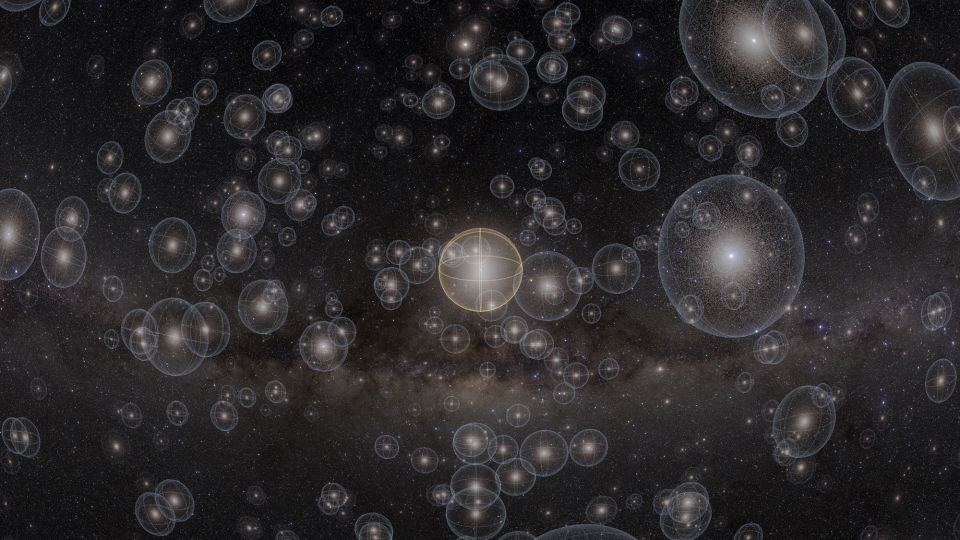An unexpected discovery at the Hayden Planetarium in New York City could significantly alter scientists’ understanding of the Oort Cloud, one of the most enigmatic regions of our solar system. During preparations for a show titled “Encounters in the Milky Way,” which premiered on Monday, a projection revealed a spiral structure within the Oort Cloud, challenging the long-held belief that it is spherical.
The Oort Cloud, a vast expanse of icy bodies orbiting the sun at distances up to 1,000 times greater than Neptune’s orbit, has never been directly observed. However, the accidental revelation of a spiral during a planetarium show has sparked intrigue among astronomers. Jackie Faherty, an astrophysicist at the American Museum of Natural History and curator of the show, described the surprise: “We hit play on the scene, and immediately we saw it. It was just there.”
Unveiling the Spiral
The spiral discovery occurred during a September test of a scene depicting Earth’s celestial neighborhood. Initially, Faherty was unsure if the spiral was a visual artifact or a genuine feature. To investigate, she contacted David Nesvorny, a scientist at the Southwest Research Institute in Boulder, Colorado, and an expert on the Oort Cloud who provided the data for the scene.
Nesvorny initially suspected data visualization distortions but confirmed the spiral’s presence after reviewing his data. “Weird way to discover things,” he remarked. “I should know my data better, after years of working with it.” The finding was significant enough to be published in April in The Astrophysical Journal.
Historical Context and the Oort Cloud’s Mysteries
The concept of the Oort Cloud dates back to 1950 when Dutch astronomer Jan Oort proposed it as a shell of icy bodies surrounding the sun up to 1.5 light-years away. As the most distant part of our solar system, it is composed of remnants from the solar system’s formation, scattered in various directions by the planets.
These icy bodies, often on eccentric and lengthy orbits, occasionally venture into the inner solar system, becoming visible as comets. “Every now and again, some of these icy bodies come into the inner solar system, and we can see the orbit that they’re on,” Faherty explained. “And they’re on these really crazy, long orbits.”
Visualizing the Invisible
Despite being surrounded by the Oort Cloud, its small, distant bodies—less than 60 miles in diameter—remain elusive to telescopic observation. Nesvorny’s spiral was hidden in his data because he had never visualized it in three dimensions. “I never looked at it in Cartesian coordinates,” he admitted. “But once you do that, it’s obvious. It’s there.”
To confirm the discovery, Nesvorny utilized NASA’s Pleiades Supercomputer to run extensive simulations. “All the simulations, all the models I have, show the spiral,” he stated. The spiral’s existence is attributed to the galactic tide—the gravitational field of the Milky Way—affecting the Oort Cloud’s small bodies, twisting their orbits into a spiral form.
Implications for Future Research
While the inner Oort Cloud may contain the spiral, Nesvorny believes the outer portion remains spherical. Observing the Oort Cloud continues to be a challenge, though the Vera C. Rubin Observatory in Chile could potentially aid by discovering individual icy bodies. However, Nesvorny cautioned that the telescope might only find dozens, not the hundreds needed for a comprehensive spiral visualization.
“If you’re going to come up with a theory of how solar systems evolve, you should take into account the kind of shapes you might have in their structure,” Faherty noted. “Maybe comets helped deliver water to Earth. Maybe the building blocks of life could be out there in the Oort Cloud.”
Broader Implications and Expert Opinions
The spiral discovery provides a new perspective on our solar system’s dynamics. Malena Rice, an assistant professor of astronomy at Yale University, emphasized its significance: “This result reshapes our mental image of our home solar system, while also providing a new sense for what extrasolar systems’ Oort clouds may look like.”
However, the theoretical nature of the findings poses challenges. Edward Gomez, an astrophysicist at Cardiff University, pointed out that the spiral’s existence is based on simulations of gravitational interactions. “What they are proposing could be true, but it could also be modeled by other shapes of the Oort cloud or physical processes,” he said.
Simon Portegies Zwart from Leiden University echoed the difficulty of confirming the spiral’s presence. “It is interesting that they found the spiral, but it seems unlikely that we are going to witness it in the foreseeable future,” he observed.
As researchers continue to explore the Oort Cloud’s mysteries, the accidental discovery at the Hayden Planetarium serves as a reminder of the universe’s complexity and the potential for unexpected revelations.
